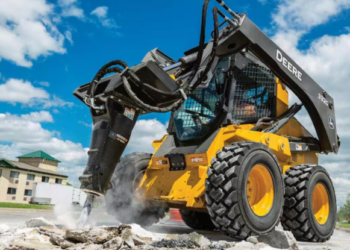Working with machinery, employees remain exposed to both mechanical and non-mechanical hazards. The injuries a person might sustain range from a minor abrasion to crushing injuries or amputation. For this reason, every business must put measures into place to protect their workers and reduce their risk of injury or death. The optimal way to protect against injuries is by investing in machine guards, as they protect not only the operator but anyone in the vicinity of the machine during operation.
As hazards range from flying debris to rotating parts, the business owner must know how to select and procure the right equipment. Furthermore, they must ensure workers know how to use this equipment and remain familiar with safe work practices. Machines must undergo regular inspections, and the company needs to maintain accurate records for all matching guarding devices and equipment. Finally, all workers must know how to identify hazards and correct any potential issues when they are detected. Contact Dynatect Manufacturing if there are any questions related to achieving this goal and ensuring all equipment remains safe and ready for use.
Worker Responsibilities
All employees operating machinery must know their roles and responsibilities, and it falls on the business owner to share this information. This includes not only full-time employees but also part-time workers and contract employees. Nevertheless, this does not absolve the business owner from knowing how to purchase, maintain, and manage all machinery used in their operations. Any person using the machinery must know how to use the guards as well as how and when to inspect them. The worker is personally accountable for the equipment in terms of its condition and use.
They must also know the training requirements for using a particular machine and all safe work practices. Employees need to understand how to maintain proper records for the equipment they use as well. Having this information reduces the risk of injury while allowing the employee and employer to remain within workplace safety guidelines. What does every worker need to know about machine guards?
Contact
A machine guard needs to create a physical barrier between the operator and the equipment. This barrier prevents any body part from entering the hazardous area during the operation of the machine. This barrier must be strong and secure without obstructing the view of the operator in any way. Furthermore, the guard must be secured in such a way that the employee cannot tamper with it, remove it, or bypass it in any way.
The guard must be attached to the machine at all times. When it cannot be attached to the machine itself for some reason, the business owner must find another place to attach the guard so it provides the necessary protection.
Prevent Additional Hazards
While a machine guard becomes of great help in protecting employees when properly used, it cannot create a new hazard when doing so. Unfinished surfaces may cause a laceration, a jagged edge could result in an injury, and a shear point remains very dangerous. To prevent injuries resulting from the use of the guard, the business must ensure the edges of each guard are bolted or rolled to eliminate any sharp edges.
The machine guard cannot obstruct the user’s view in any way, as this could lead to injuries. To prevent injuries while maintaining the machine, the owner needs to establish a way to lubricate moving parts without the removal of this guard. This may be done by locating oil reservoirs that aren’t obstructed by the guard and establishing a line that leads to the area to be lubricated. This method allows the user to lubricate the machine without the need to enter a danger zone.
Machine Operation
All safeguards should be established in such a way that they won’t interfere with a worker’s ability to perform their job quickly and comfortably. When a safeguard slows them down, they may override or disregard it. By properly safeguarding the equipment, business owners find they can increase efficiency, as workers are no longer concerned about injuries.
Hazards
Hazards presented by operating machinery come in three basic types. Rotating, reciprocating, and transverse motions remain hazards. The hazards arise from the rotation of machine parts, up and down motions or sliding parts, and materials that move in one continuous line. Workers must remain aware of points of operation or those areas where cutting, shaping, boring, and bending activities take place. Shear and pinch points remain of concern, as a body part or clothing may become entrapped between a stationary object and a part that is moving. This includes any power transmission machines that transfer energy.
However, workers must also remain aware of non-mechanical hazards in the workplace. This may include flying chips that could harm the machine operator and those in the vicinity of the equipment. Splashes that are created during the operation of a machine also remain of concern. Machine guards help to prevent injuries resulting from these non-mechanical hazards as does the use of personal protective equipment.
Safeguarding Methods

Machine safeguards come in several different varieties. Guards serve as physical barriers that ensure a worker doesn’t come into contact with dangerous parts and are adjustable, self-adjusting, or fixed. Devices also prevent or limit access to a danger zone and come in many forms. Workers may encounter safety trip controls, gates, or presence-sensing devices. Other safeguarding options that fall under the device category include pullback and restraint straps along with two-hand controls.
An employer may choose to make use of automated feeding and ejection machine safeguarding methods. These methods prevent the operator from being exposed to the point of operation when they are working with stock or materials. In certain situations, a business can relocate the machine to remove a hazard from an employee’s workspace. Finally, miscellaneous aids may be used to ensure operators and those in the vicinity of the equipment aren’t shared. Miscellaneous aids range from shields to holding tools and awareness barriers.
Consider all machine safeguarding operations to determine which are appropriate for your organization. Business owners typically find they need to use several safeguarding methods for the best results. If there is any question as to which safeguards should be used and where don’t hesitate to ask the supplier. They will be happy to help you find the right products for your needs.












